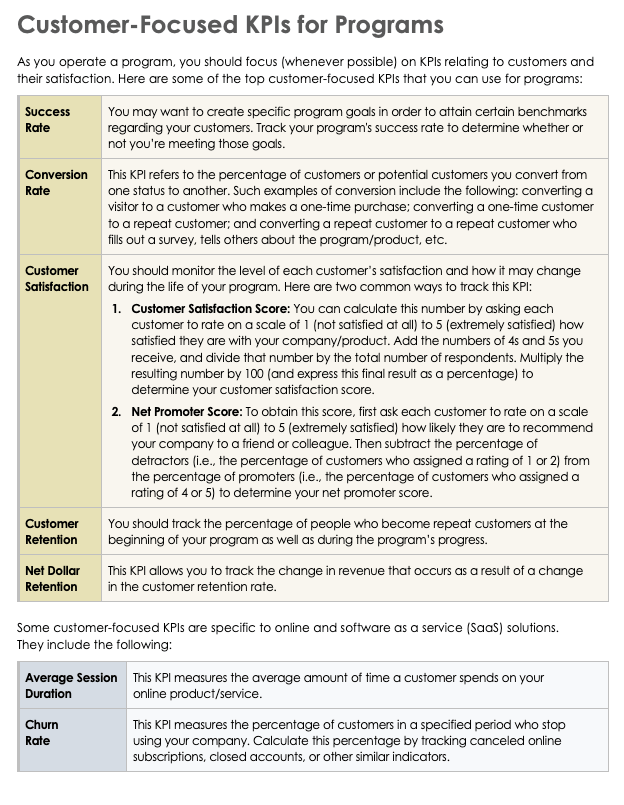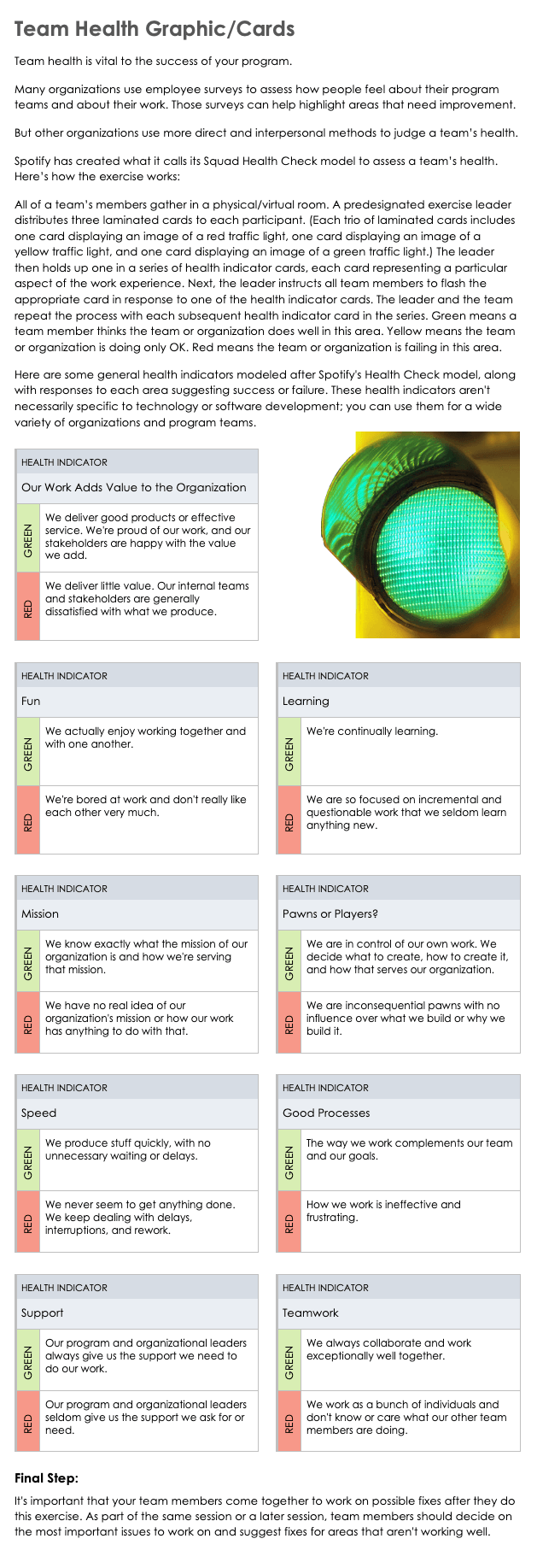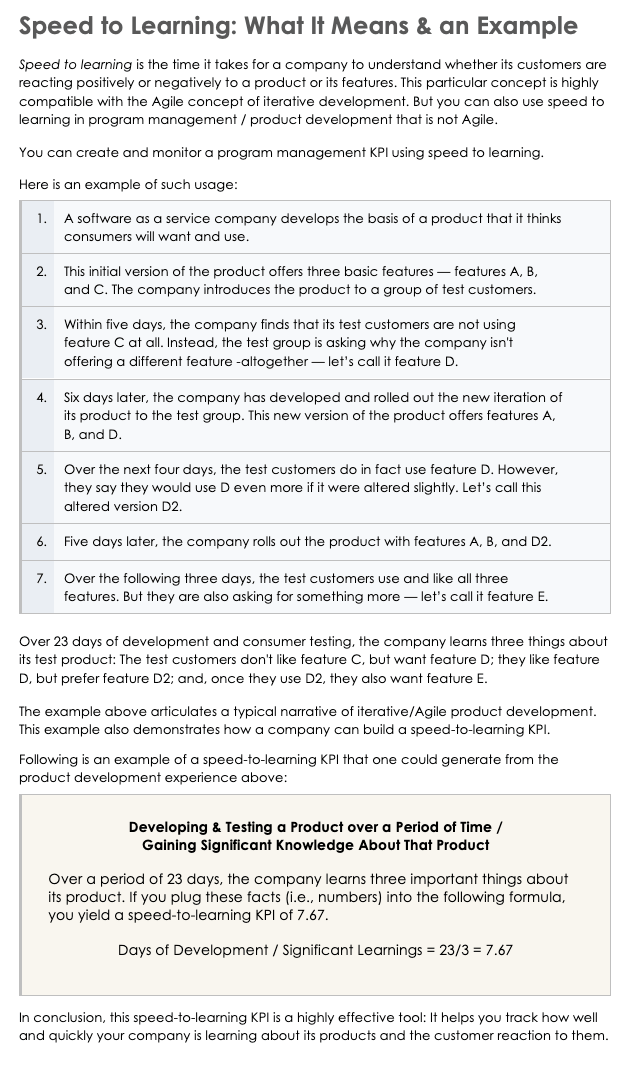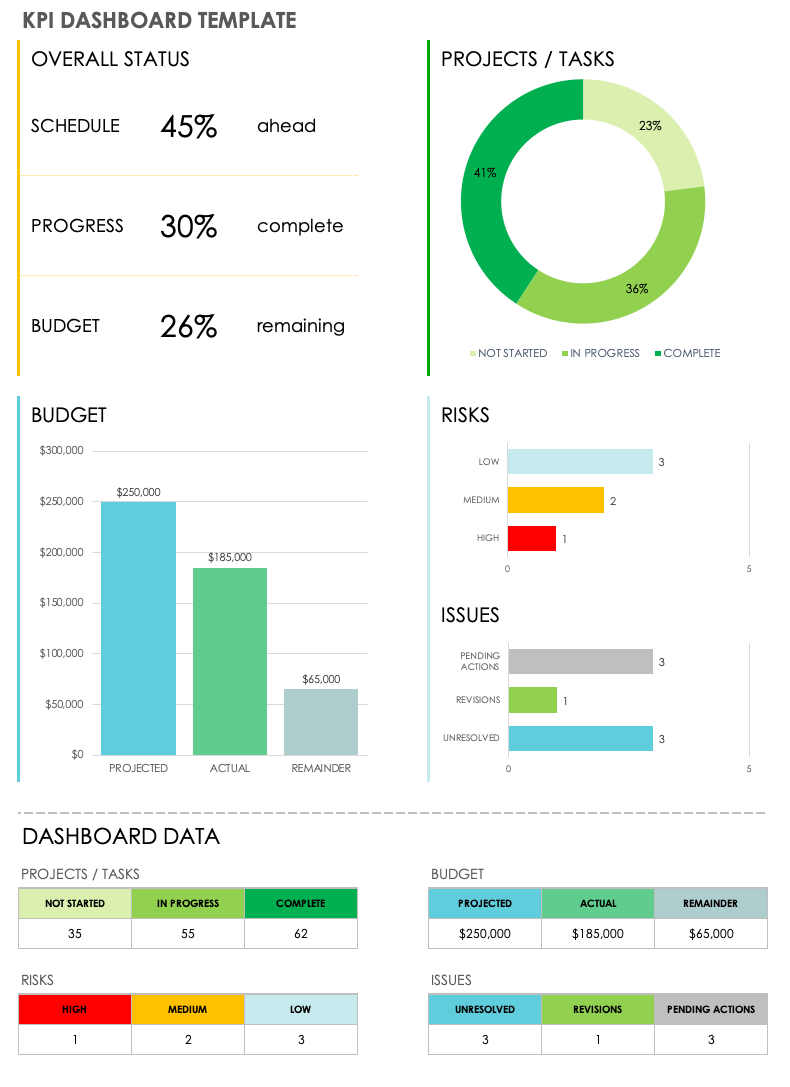What Are Key Performance Indicators in Program Management?
Key performance indicators in program management are different from KPIs used in project management. Program KPIs still measure performance, but they more closely align with business goals and may be specific to a program.
Program KPIs might track business results before and after a program is established, for instance, or they may track customer retention and satisfaction measures. Program leaders also often customize metrics and KPIs for a specific program — those customized metrics might track actual results of the program in specific areas, as compared to expected results.
Program leaders also will likely want to establish a simplified dashboard, whether by using program software or via other means. This dashboard should show the current results for the program’s most important metrics in a simple, compelling way.
Jake Carroll is the founder of Create Kaizen, a consulting company focused on personal, team, and organization development. He says project management KPIs are often easier for team members to formulate and understand than program management KPIs. With project management KPIs, he says, “You deliver something. ‘Did we deliver on time and scope and under budget?’”
Program goals are often more far-reaching and sometimes more vague. Therefore, KPIs are “highly dependent on just what the program is and what you're looking for,” Carroll says.
You can learn more by reading our guide to best practices in managing a program, or about the broader work of managing a program across a larger enterprise. And you can find some basic recommendations on being a good program manager.
Which Metrics Are Used Most Frequently in Program Management?
Metrics that monitor program management often focus on financial results and success with customers. They also focus on effective and efficient organizational operations, and on the organization’s ability to strategically move forward.
“As a starting point, think about lagging indicators that track where the program has been and what it has achieved — in other words, milestones and project completion dates,” says Elizabeth Harrin, a program manager, author, and founder of Project Management Rebels. “Then, think about tracking leading indicators — understanding the process and looking for measures that help identify whether the work will stay on track. In other words, ‘What can you do to influence future performance?’”
If your organization has a program management office (PMO), it will help to determine many of these KPIs. But you should also monitor and track the KPIs, even if you have a PMO. (Read our comprehensive guide on how PMOs improve program performance.)
Program Management KPIs Specific to Certain Industries
Many industries have program KPIs that are specific to the routine work that is part of that industry. In this section, we’ll take you through some of the most common program KPIs for construction, software development, and software as a service (SaaS) organizations.
Program Management KPIs for Software Development
Experts recommend a few common KPIs that can help you monitor how your program management is working in software development. A few of those KPIs include the following:
- Software Defects: Defects in a competed piece of software
- Team Velocity: The number of tasks your software development team completes in a defined period or, in Agile project management, the number of story points they complete in a sprint.
- Technical Debt: A measurement of how often your team is using a solution in software code that is quicker to accomplish but will later cause more rework that will take longer.
“We build all these really complex things,” Carroll says. “And every time we build something, it takes twice as long because we have to tiptoe around these eggshells and the code. If we just had two weeks to clean up all this code ... it's an upfront investment that pays off in the long run, but it doesn't deliver features right now.”
Program Management KPIs for SaaS Solutions
Experts recommend several KPIs to help you judge how your program management is working for your company’s SaaS solutions. Common KPIs include the following:
- Average Length of Session: This metric refers to how long the average session is for all users.
- Bounce Rate: This is the percentage of customers who leave your website or product within a specified period of time.
- Churn Rate: The percentage of subscriptions or customers you lose in a defined period of time.
- Monthly Active Users: This is the number of users who are active during a specific month.
How to Choose the Best KPIs and Metrics for Program Management
Each program is unique, so it’s important to choose KPIs and metrics that fit with the program’s specific goals. Some KPIs and metrics may even be tailored specifically to an individual program.
“Program metrics should reflect what’s important to the program,” says Harrin, the founder of Project Management Rebels. “It’s not sensible to have a fixed list for every program because every program is different. The executive sponsor can help determine what’s important and, of course, that should align with the program’s goals and roadmap. Look at the original business case, target operating model, vision, and other information that was created at the program onset, and use that to identify what KPIs you should create and track.”
Still, all KPIs should have some common characteristics. Here are some of those required characteristics you should check with every proposed KPI:
- Aligned: The KPI should help measure the alignment of a program’s work and goals with the strategic goals of the business.
- Attainable: The KPI must measure something where the ultimate target is realistic and attainable.
- Clear: The KPI must be easy to understand. All team members must be clear on what the metric is measuring.
- Measurable: The KPI must be measurable, though you can find creative ways to measure information that seems more qualitative.
- Optimized: The KPI should not just measure incremental processes. It should instead focus on providing overall strategic value.
- Reported: Your program team must routinely monitor and report each KPI and what it is showing — good or bad.
- Team Agreement: Every team member and stakeholder should agree the KPI holds value — that it measures something that is important to measure.
What Should Be on a Program Management Dashboard?
Choose KPIs and metrics for your dashboard that will tell the most about the success or progress of your program. These may include custom metrics you create and monitor just for that program. It may also include other metrics that are more common, but will also be important to your program.
“Be wary of out-of-the-box dashboards from project management software, and create tailored dashboards that tell you what you actually need to know,” says Harrin.
Experts make another important recommendation: Don’t include too many KPIs and metrics on your dashboard. Doing so can be confusing and doesn’t provide a quick look at how the program is going.
“Ultimately, the dashboard should show you what you and other key stakeholders need to see in order to manage the program effectively and make decisions about what actions to take,” Harrin says.
Beyond KPIs that may be unique to your program, some general program KPIs include the following:
- Benefits
- Budget (and budget used)
- Outstanding decisions and current issues
- Resources available
- Risks
- Schedule
Download Sample Program Management KPI Dashboard
Download KPI Dashboard Template
Microsoft Excel
| Google Sheets
You can use this KPI dashboard template as a foundation for your KPI dashboard. The template includes sections to detail the overall status of the program, project and /tasks that are complete, in progress, or not started, money spent and budgeted, and any risks and unresolved issues.
Get the Most out Of Program Management KPIs with Smartsheet for Project Management
From simple task management and project planning to complex resource and portfolio management, Smartsheet helps you improve collaboration and increase work velocity -- empowering you to get more done.
The Smartsheet platform makes it easy to plan, capture, manage, and report on work from anywhere, helping your team be more effective and get more done. Report on key metrics and get real-time visibility into work as it happens with roll-up reports, dashboards, and automated workflows built to keep your team connected and informed.
When teams have clarity into the work getting done, there’s no telling how much more they can accomplish in the same amount of time. Try Smartsheet for free, today.







